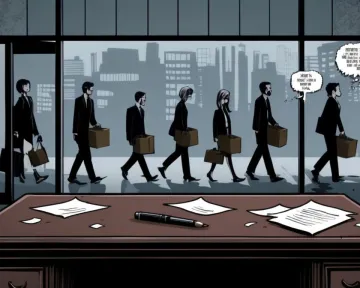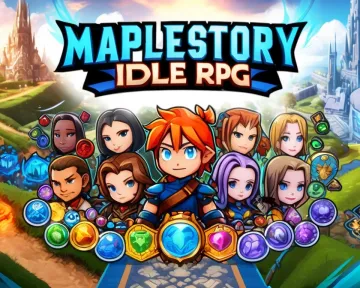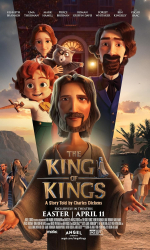
The King of Kings
Dawn of a Timeless Journey I found myself unexpectedly drawn into an ancient narrative as soon as the opening scenes of The King of Kings unfolded on screen. Experiencing this movie felt...
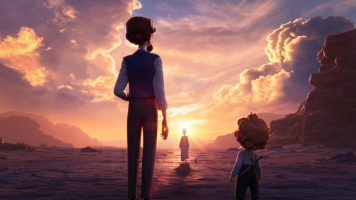
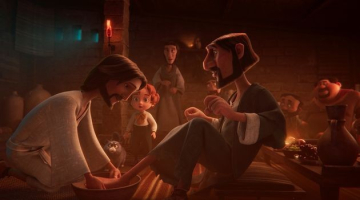
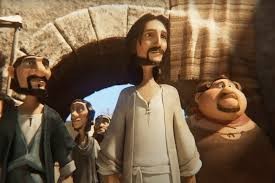
Dawn of a Timeless Journey
I found myself unexpectedly drawn into an ancient narrative as soon as the opening scenes of The King of Kings unfolded on screen. Experiencing this movie felt like stepping through a portal into a world where history and myth are interwoven with emotion and grand imagery. From my very first viewing, I became completely absorbed in the rich tapestry the film presents, each frame reminiscent of an epic canvas that tells a story much larger than its own runtime.
Immersive Tapestry of History
Walking into the theater, I had a sense of anticipation about how this film would merge historical reverence and cinematic spectacle. I felt that the screenplay boldly embraced its source material while simultaneously experimenting with a narrative depth that challenged my perceptions. The script did not shy away from exploring profound spiritual dilemmas; instead, it used historical moments and characters to evoke feelings that ranged from awe to introspection. I was particularly struck by the way the film intermingles the human with the divine, a narrative method that continuously beckons the audience to reflect on the larger questions of purpose and destiny.
The dialogue, though rarely abundant, carries an intensity that transcends ordinary conversations. Every exchanged word seemed carefully chosen to enhance the grandeur of the story. I found myself leaning forward in my seat, feeling that each scene was not just a passage of time, but a meditation on the eternal struggle between earthly trials and transcendent ideals. This thoughtful approach to storytelling is one of the strengths that impressed me most throughout the viewing experience.
An Odyssey of Visual Splendor
The visual elements of The King of Kings truly captivate the imagination. I experienced the film as a vivid interplay of colors, contrasts, and meticulously crafted scenery that paired equally with its narrative ambitions. The cinematography brought every detail to life in a remarkable fashion, capturing the essence of ancient settings with a modern lens of precision and artistry.
Every shot felt like a painted masterpiece; the use of natural lighting and shadows gave the film a sense of realism that felt palpable. I found that each frame of the movie conveyed the emotion of the scene without the need for elaborate dialogue. There is a sincerity in the use of wide-angle views, tight character close-ups, and long, lingering takes. The effort placed in creating these visuals is a testament to the creative vision behind the camera, making my experience deeply immersive and emotionally resonant.
The Resonance of Epic Performances
At the center of this cinematic epic are the performances that breathed life into the timeless characters. I experienced a wave of emotions as the actors embodied their roles with a profound intensity that seemed to transcend the boundaries of ordinary cinematic expression. Their portrayals were not mere recitals of lines, but deeply personal renderings that embraced both vulnerability and strength.
Whenever a character entered a pivotal moment, I was reminded of the fine line between human frailty and celestial fortitude. The eyes of the lead actor revealed layers of passion, conviction, and burden that resonated with me long after the scene was over. His subtle expressions, coupled with the gravitas of his dialogue, elicited a spectrum of emotions—from quiet sorrow to explosive determination. It was as if every glance and every pause conveyed the weight of a lifetime of experience immediately before the scene could even unfold in words.
Sonic Landscapes and Celestial Audio
Turning my attention to the auditory dimension of The King of Kings, I was equally enchanted by the film’s soundscape. The musical score constructed an atmosphere that was both majestic and introspective. Instruments and vocal arrangements came together in a symphony that seemed to speak directly to the soul, reinforcing the film’s narrative at every heartbeat.
The sound design resonated with those deep, haunting tones that spoke of ancient temples and timeless truths. I felt that each musical swell echoed the emotional high points of the film, while the quiet, almost reverential, moments of ambient sound allowed for an ample space for reflection. This delicate balance was crafted in such a way that it did not overpower the dialogues or visuals, but instead elevated every element on screen to a state that felt near-sacred.
Layers of Spiritual and Emotional Nuance
The film invited contemplation on subjects that are as old as time itself—faith, sacrifice, redemption, and the eternal nature of hope. I was moved by how the narrative threaded profound spiritual allegory through the lives of its characters without making it feel contrived. There is a sanctity that pervades many of the scenes, reminding me that the story is as much about moral evolution as it is about historical events.
Each moment presented a deliberate pause—a space to consider the implications of divine duty and human choice. At one point in the film, a reflective pause allowed me to gaze inward, considering my own journey and the collective human experience. The movie’s ability to portray lofty philosophical questions alongside personal tribulations struck a chord in me, transforming an otherwise familiar tale into an intimate dialogue with eternity.
Artistic Brilliance in Set Design and Costumes
Immersing myself in the world of The King of Kings, I was awestruck by the elaborate set designs and richly detailed costumes. The creators paid close attention to every feature, crafting environments that served as authentic backdrops for the unfolding drama. As I sat in the theater, I was transported to ancient landscapes where each stone and fabric spoke of a bygone era with unrivaled authenticity.
The costumes, often intricately patterned and symbolically significant, added an extra layer of storytelling. I noted how the color palettes, textures, and even the minimal adornments worked together to emphasize the cultural and historical context of every scene. It was fascinating to observe how these elements contributed to the overall mood, making it easier to believe in the reality of the setting, while also accentuating the narrative’s epic scale.
Emotional Elevations in Narrative Crafting
The narrative complexity of the movie presented me with an array of emotional landscapes. I experienced a series of crescendos and lulls that mirrored the inner workings of a soul on a quest for meaning amidst chaos. The screenplay unified multiple storylines that interlock in a manner that might at first seem overwhelming, but soon reveals a delicate balance between tension and release.
A particular scene where the protagonist faced an insurmountable challenge resonated with me most. It was as if the director wanted to capture that precise moment when despair teeters on the edge of hope. I could almost feel the burden of the character's journey, shared collectively by everyone watching. The delicate interplay of personal sacrifice and communal memory was depicted with such care that it felt as if the film was inviting me into its inner sanctum of emotion and moral inquiry.
The Meticulous Blend of Realism and Myth
One aspect that struck me deeply was the film’s ability to blend historical realism with mythic storytelling. While grounded in a particular era with painstaking attention to historical detail, there exists a surreal quality that elevates the narrative into a realm of the symbolic and the spiritual. I appreciated how the aesthetic choices did not shy away from the grandeur of myth; instead, they embraced it, allowing for an exploration of deeper meanings beyond mere historical recounting.
As I followed the storyline, I could sense layers of meaning beneath the surface. This duality—where mythology meets reality—was not just an accident but a deliberate artistic decision. It enabled me to move beyond the literal events, inspiring me to contemplate the timeless questions about the human condition, destiny, and the very nature of divine intervention. Such a dynamic approach to storytelling enriched my viewing experience with a sense of wonder and introspection that lingered long after I left the theater.
Envisioning the Divine Through Direction
My own experience with The King of Kings was profoundly shaped by the director's vision, which I felt was both bold and intricately detailed. The careful framing and pacing of the narrative evoked a cinematic language that felt almost reverential. I noticed how each scene was choreographed much like a painter’s stroke, balancing tension, emotion, and narrative direction in a seamless flow.
The nuances of the director’s approach reminded me of intimate conversations where every gesture carries hidden significance. There was a clarity to the storytelling, an unmistakable intentionality that led me through every moment with a sense of calm curiosity. It felt like I was engaged in a dialogue not only with the characters but also with the very essence of what it means to tell a story that stretches across centuries. This deliberate method of unfolding the narrative was one of the many dimensions that enraptured me throughout the duration of the movie.
The Subtle Poetry of Cinematic Expression
Beyond the spectacle and the historicity, the film possesses a quiet, almost poetic quality that resonated deeply with my inner sensibilities. As I watched, I became aware of the subtleties embedded in every scene—each gesture, each fleeting look was like a line in a verse of ancient poetry. The cinematographic composition and the interplay of light and darkness spoke to me in a language of its own, evoking memories of vast desert landscapes and stormy skies where every element held a symbolic meaning.
This poetic expression is meticulously crafted and delivered in a manner that steers clear of overt dramatization while still maintaining an undeniable emotional impact. I found that this restraint allowed the film to breathe, letting me experience the narrative at my pace—a journey where each subtle cinematic nuance added another layer to the story. This careful crafting of moments transformed what could have been mere visual indulgence into a deeply felt meditative experience.
Interwoven Themes and Personal Reflection
The King of Kings prompted me to re-examine my own understanding of faith, struggle, and redemption as reflections of the human spirit. Throughout the movie, I witnessed how the interplay of personal decisions and larger historical currents could intertwine to shape destinies. I felt that the narrative was not only a retelling of an ancient story, but also a mirror reflecting our own modern dilemmas and aspirations.
As scenes unfolded with poignant imagery and carefully constructed dialogues, it became evident that the film drew upon universal themes that transcend time and culture. I could relate to the characters’ internal battles and aspirations, and it was as if the movie encouraged me to confront my own challenges with renewed vigor. The thematic richness of the storyline invited deep reflection and stirred a personal dialogue with the ideas presented on screen, making each viewing a transformative experience.
Rhythms of Storytelling and Narrative Fluidity
One of the vital elements that captured me within the film was its narrative rhythm—the ebb and flow of the storyline, which evolved naturally, mirroring the cadences of an ancient epic. I was impressed by the way transitions between intense dramatic scenes and more introspective moments were managed with a sense of grace. This balance, I believe, is key to why the film holds such a powerful sway over its audience.
The pacing allowed me ample time to engage deeply with both the immediate action and the lingering emotional resonance of preceding events. The careful modulation of tempo ensured that I was neither overwhelmed by too much intensity at once nor bored by prolonged quietude. Instead, the story unfolded with an organic pulse, inviting me to accompany every turn of events and fill in the quiet spaces with my own reflections and interpretations.
Crafting a Visual and Emotional Mosaic
Watching The King of Kings felt like piecing together a mosaic where every fragment is essential to the overarching narrative. I could perceive how each scene, every carefully chosen visual detail, and all the nuanced performances interconnect to form a picture that is both grand and intimate. The experience was a fusion of dramatic intensity and subtle beauty, a combination that worked harmoniously to deliver a narrative that speaks to the heart as much as it does to the mind.
For me, the film is more than a historical reenactment—it is a vibrant portrait of the human soul laid bare against a canvas of myth, tradition, and the eternal pursuit of truth. The array of emotions and themes interwoven throughout the movie allowed me to feel as if I was part of something much larger than life, an intricate mosaic that celebrates the power of storytelling across time and space. Every moment served as a reminder that beneath the veneer of grandeur lies a deep, raw humanity that is both vulnerable and deeply resilient.
Pros
- Immersive historical narrative that draws viewers into a timeless journey
- Captivating visual splendor and meticulously crafted cinematography
- Powerful, emotionally resonant performances that convey deep character emotions
- Sublime auditory experience with a majestic and reflective musical score
- Rich exploration of spiritual, emotional, and moral themes
- Intricate set designs and authentic costumes that enhance the storytelling
Cons
- Narrative complexity may overwhelm some viewers
- The pacing might feel slow during introspective moments
- The blend of realism and myth can sometimes appear inconsistent



